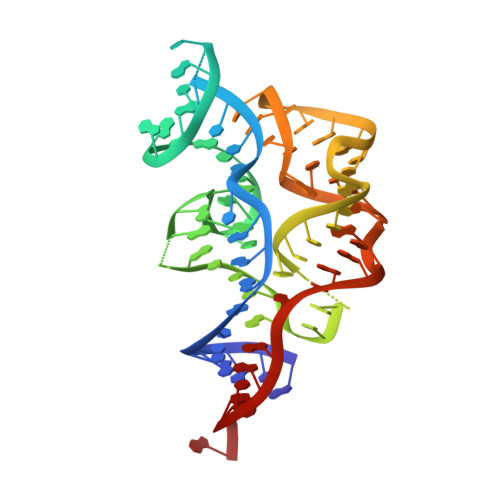Subsite Ligand Recognition and Cooperativity in the TPP Riboswitch: Implications for Fragment-Linking in RNA Ligand Discovery.
Zeller, M.J., Nuthanakanti, A., Li, K., Aube, J., Serganov, A., Weeks, K.M.(2022) ACS Chem Biol 17: 438-448
- PubMed: 35060698
- DOI: https://doi.org/10.1021/acschembio.1c00880
- Primary Citation of Related Structures:
7TD7, 7TDA, 7TDB, 7TDC - PubMed Abstract:
RNA molecules can show high levels of cooperativity in their global folding and interactions with divalent ions. However, cooperativity at individual ligand-RNA interaction sites remains poorly understood. Here, we investigated the binding of thiamine and methylene diphosphonic acid (MDP, a soluble structural analogue of pyrophosphate) to the thiamine pyrophosphate riboswitch. These ligands each bind weakly at proximal subsites, with 10 μM and 1 mM affinities, respectively. The affinity of MDP moderately improves when thiamine or thiamine-like fragments are pre-bound to the RNA. Covalent linking of thiamine and MDP substantially increases riboswitch binding to a notable high affinity of 20 nM. Crystal structures and single-molecule correlated chemical probing revealed favorable induced fit effects upon binding of individual ligands and, unexpectedly, a substantial thermodynamically unfavorable RNA structural rearrangement upon binding of the linked thiamine-MDP ligand. Thus, linking of two ligands of modest affinity, accompanied by an unfavorable structural rearrangement, still yields a potent linked RNA-binding compound. Since complex ligands often bind riboswitches and other RNAs at proximal subsites, principles derived from this work inform and support fragment-linking strategies for identifying small molecules that interact with RNA specifically and with high affinity.
- Department of Chemistry, University of North Carolina at Chapel Hill, Chapel Hill, North Carolina 27599-3290, United States.
Organizational Affiliation:



















